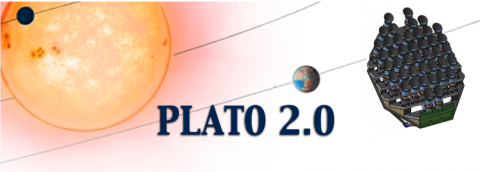PLATO
PLATO2.0 (Planetary Transits and Oscillations of stars)
The main objective is the discovery and characterisation of exoplanetary systems like the solar system. More specifically, PLATO2.0 aims at detecting terrestrial exoplanets in the habitable zone of solar-type stars through the characterization of their bulk properties.
This will be done for thousands of rocky (including Earth twins), icy or giant planets, including the architecture of their planetary system, to fundamentally enhance our understanding of the formation and the evolution of planetary systems.
These goals will be achieved through:
(1) planet detection and radius determination (2% precision) from photometric transits;
(2) determination of planet masses (better than 10% precision) from ground-based radial velocity follow-up,
(3) determination of accurate stellar masses, radii, and ages(10% precision) from asteroseismology,
(4) identification of bright targets for atmospheric spectroscopy.
The IAA-CSIC is responsible of the development, construction, verification and delivery of all units of MEU (Main Electronics Unit), for all the hardware models (and the corresponding firmware) required to the PLATO2.0 consortium. IAA is also responsible of providing the consortium with the N_DPU (Data Processing Unit) simulator for the FEE operation and the N_DPU EGSE (Electrical Ground Support Equipment) or the instrument integration and verification. The overall MEU activities will be coordinated by Dr. Juan Carlos Suárez (Universidad de Granada), including the participation together with the industry in the MEU project office.


